函数介绍
linux shell中的函数和大多数编程语言中的函数一样 将相似的任务或者代码封装到函数中,供其他地方调用
语法格式


如何调用函数
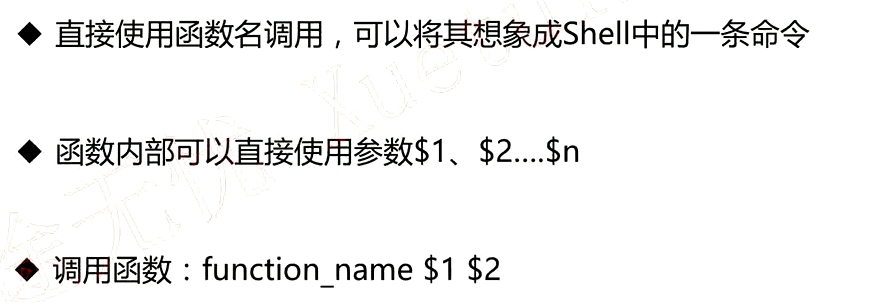
shell终端中定义函数
[root@master day3]# test()
> {
> echo "test function";
> }
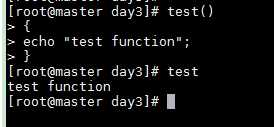
练习;时刻监听 nginx的进程,失败重启
nginx_daemon.sh
#!/bin/bash
#
# 获取脚本子进程的pid,如果脚本名称中带nginx,也会当成nginx进程
this_pid=$$
while true
do
ps -ef | grep nginx | grep -v grep | grep -v $this_pid &> /dev/null
if [ $? -eq 0 ];then
echo "Nginx is running well"
sleep 5
else
systemctl start nginx
echo "Nginx is down,Start it..."
fi
done
启动脚本
sh nginx_daemon.sh
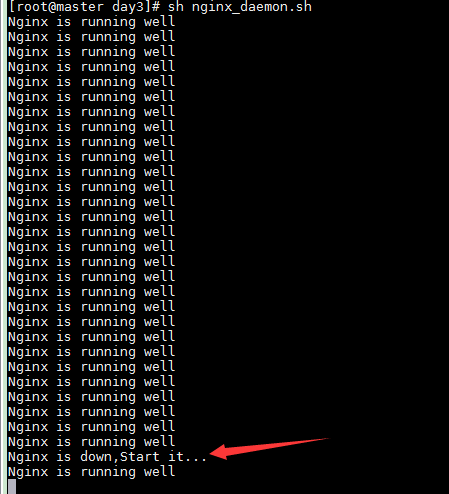
一系统守护进程运行
nohup sh nginx_daemon.sh &
查看日志
tail -f nohup.out
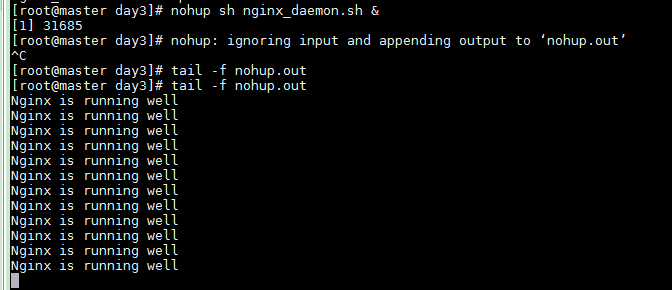
向函数传递参数
一些高级语言传递参数

高级语言函数调用

shell 中函数传参

shell 中函数调用

简单小示例
[root@master day3]# function greeeting
> {
> echo "hello $1"
> }
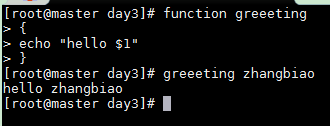
向函数传递参数: 函数传参和给脚本传参类似,都是使用$1 $2 $3 $4 $5 $6 $7这种方式
例子1:
需求描述:写一个脚本,该脚本可以实现计算器的功能,可以进行+-*/四种运算。
calucate.sh
#!/bin/bash
#
function calcu
{
case $2 in
+)
echo "`expr $1 + $3`"
;;
-)
echo "`expr $1 - $3`"
;;
'*')
echo "`expr $1 * $3`"
;;
/)
echo "`expr $1 / $3`"
;;
esac
}
calcu $1 $2 $3
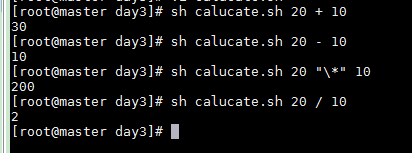
函数的返回值
返回值的方式

使用 return 返回值

使用 echo 返回值

案例1 判断nginx进程是否存在
函数使用return返回值,通常只是用来供其他地方调用获取状态,因此通常仅返回0或1;0表示成功,1表示失败
nginx.sh
#!/bin/bash
#
this_pid=$$
function is_nginx_running
{
ps -ef | grep nginx | grep -v grep | grep -v $this_pid &> /dev/null
if [ $? -eq 0 ];then
return 0
else
return 1
fi
}
is_nginx_running && echo "nginx is running" || echo "nginx is stopped"
执行脚本
sh nginx.sh

查看脚本进程的执行过程
sh -x nginx.sh
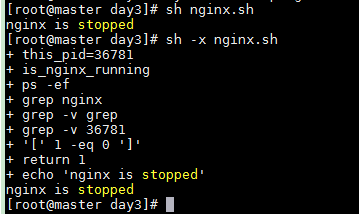
案例2 获取系统中的用户
使用echo返回值 使用echo可以返回任何字符串结果 通常用于返回数据,比如一个字符串值或者列表值
get_sys_user.sh
#!/bin/bash
#
# 获取系统所有的用户名
function get_users
{
users=`cat /etc/passwd | cut -d: -f1`
echo $users
}
# 定义一个变量将获取用户列表赋值给这个变量
user_list=`get_users`
index=1
for u in $user_list
do
echo "the $index user is : $u"
index=$(($index+1))
done
执行脚本
sh get_sys_user.sh
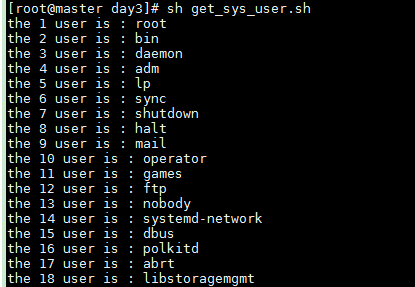
shell函数中的局部变量和全局变量
全局变量

局部变量

var.sh
#!/bin/bash
#
var1="Hello world"
function test
{
var2=87
}
echo $var1
echo $var2

调用test函数后,$var2就变成了全局变量
#!/bin/bash
#
var1="Hello world"
function test
{
var2=87
}
echo $var1
echo $var2
test # 调用test函数后,$var2就变成了全局变量
echo $var1
echo $var2
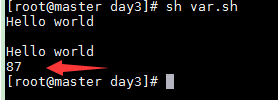
在函数中也可以调用全局变量
#!/bin/bash
#
var1="Hello world"
function test
{
var2=87
}
echo $var1
echo $var2
test
echo $var1
echo $var2
function test1
{
echo $var2
}
test1
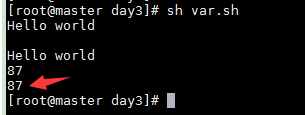
如果函数中声明了局部变量,当函数执行完成后局部变量就会被销毁
#!/bin/bash
#
var1="Hello world"
function test
{
local var2=87 # 局部变量,只在函数内部生效,生命周期只在函数内部
}
test
echo $var1
echo $var2

函数库
为什么要定义函数库

函数库示例:
定义一个函数库,该函数库实现以下几个函数:
- 1.加法函数add add 12 89
- 2.减法函数reduce reduce 90 30
- 3.乘法函数multiple multiple 12 10
- 4.除法函数divide divide 9 3
- 5.打印系统运行情况的函数sys_load,该函数可以显示内存运行情况,磁盘使用情况
cat /lib/base_function
function add
{
echo "`expr $1 + $2`"
}
function reduce
{
echo "`expr $1 - $2`"
}
function multiple
{
echo "`expr $1 * $2`"
}
function divide
{
echo "`expr $1 / $2`"
}
function sys_load
{
echo "Memory info"
echo
free -m
echo
echo "Disk Usage"
echo
df -h
echo
}
测试库函数
. /lib/base_function sys_load
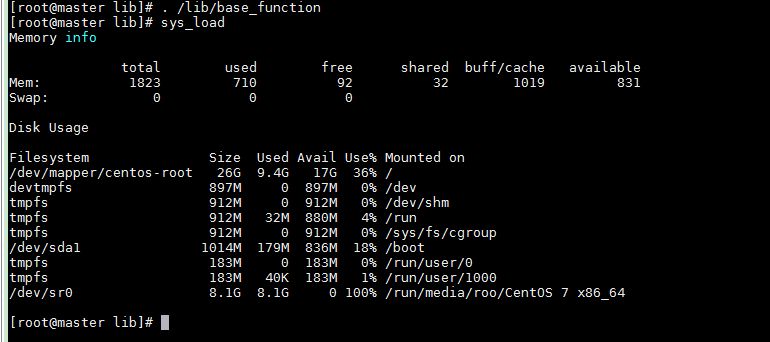
calculate.sh
#!/bin/bash # # 引入库函数,写绝对路径避免出错 . /lib/base_function add 12 23 reduce 90 30 multiple 12 12 divide 12 2

库函数经验之谈:
- 库文件名的后缀是任意的,但一般使用.lib
- 库文件通常没有可执行权限
- 库文件无需和脚本放在同级目录,只需要在脚本中引用时指定
- 第一行一般使用#!/bin/echo,输出警告信息,避免用户执行